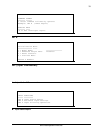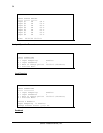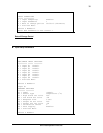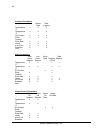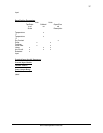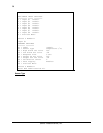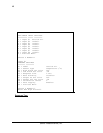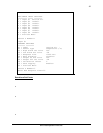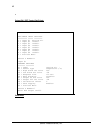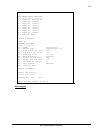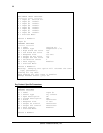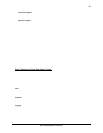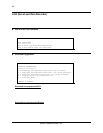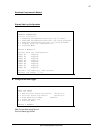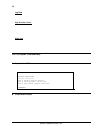
41
www.remotepossibilities.com
COMMAND>INP S
SET/CHECK INPUT SETTINGS
========= ===== ========
1 = Input #1 Outside Air
2 = Input #2 <Label>
3 = Input #3 <Label>
4 = Input #4 <Label>
5 = Input #5 <Label>
6 = Input #6 <Label>
7 = Input #7 <Label>
8 = Input #8 <Label>
0 = Previous Menu
Choose a Number>1
Input #1
PRESENT SETTINGS
======= ========
01 = Label Outside Air
02 = Sensor Type Temperature (°F)
03 = High Alarm Set Point 260
04 = Low Alarm Set Point -94
05 = Response Time 10000 Sec.
06 = Rate Alarming Disabled
07 = Output On Set Point 260
08 = Output Off Set Point -94
09 = Calibration Offset 0
10 = Data Logging Enabled
00 = Previous Menu
Choose a Number>5
Enter New Response Time>120
Rate Alarm Set-Points
The Messenger 570 system is capable of detecting and alarming on various input rate of change conditions.
The conditions detected vary depending upon the input type.
•
For temperature, linear, and 4-20 mA, sensor types a single rate of change set point may be entered. This
set point may be positive or negative and is in addition to the normal high and low alarm set points. Each
of these set points are entered in engineering units. Unlike the high and low set points which are
continuously scanned 10 times/second, the rate at which these inputs are scanned for rate-of-change
condition is based on the rate of change scan period. (See INP O.)
•
The rate of change scan period is a global, user-programmable time period, from 1 second to 24 hours.
Being global, this period applies to all temperature, linear, and 4-20 ma, sensor types. Upon system reset,
each of these inputs will have their current values stored in memory. After the rate-of-change time period
has elapsed, the input values are read and compared to the previously stored value. If the difference of
these two values exceeds the rate-of-change set point, then an alarm is triggered. The alarm response time
does not apply to the rate-of-change set points. Only the readings taken at the rate-of-change interval are
compared to the rate-of-change set point. Any activity occurring between the rate-of-change interval is
ignored.
•
For pulse count rate sensor types, the input is always represented by a positive hourly rate. This hourly
pulse count rate is updated only once per hour, on the hour. If the rate exceeds either the high or low set
point, then an alarm will be triggered. The alarm response time does not apply to these set points.



